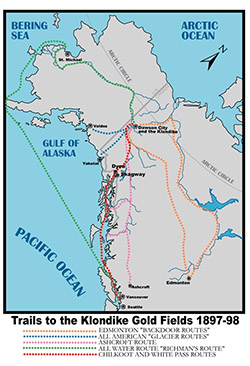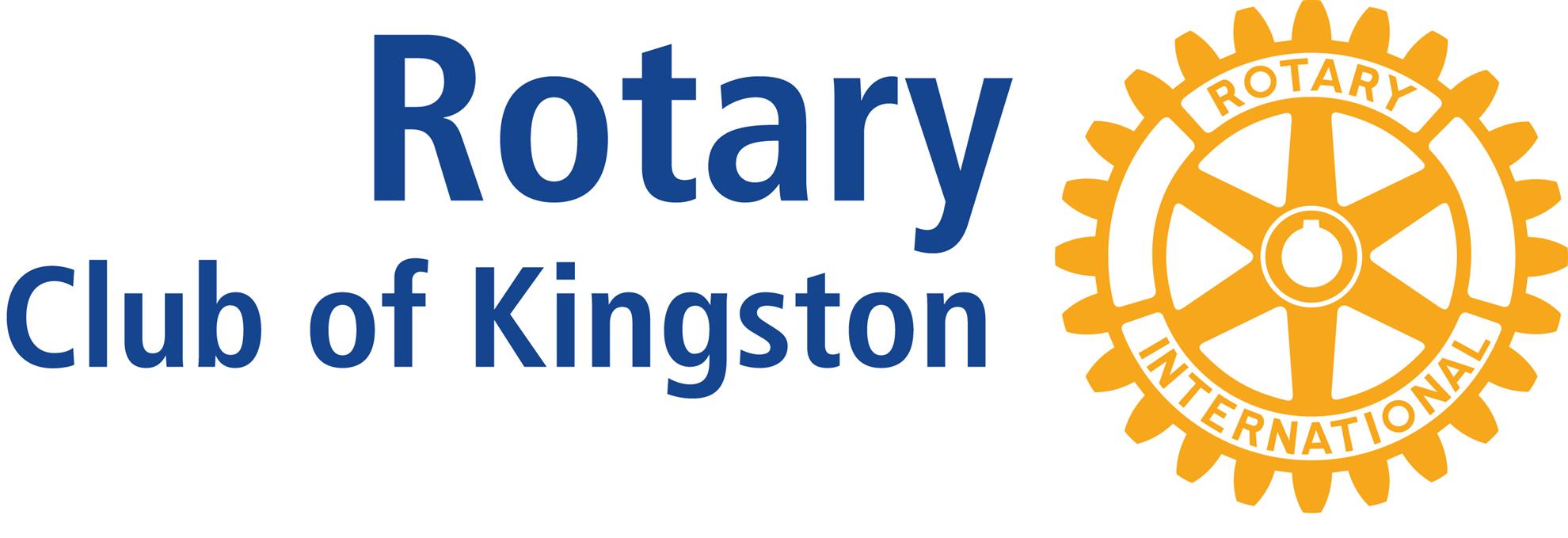
Although the Yukon Gold Rush lasted only 3 years, it had a major impact on Canada’s history.
There were about 200 ‘Sourdoughs’ mining for gold along the Yukon River prior to the discovery of a large nugget in Bonanza Creek on 16 August 1896 by an American George Carmack and two Tagish relatives.
The rush was on as men flocked from Forty Island and Circle to Dawson and the Klondike River. However, only a few rumours got out before the winter freeze up.
During the ‘hunger winter’, men worked their claims, first by panning until the streams froze, then by digging up to 20-foot- deep shafts through permafrost to bedrock, then rifts outward, looking for ancient stream beds and gold.
The piles of ‘paydirt’ grew all winter long, awaiting the spring melts to sluice their diggings and retrieve their gold. The currency was gold dust and nuggets; there was no money or banks. Of course, the saloons, dance halls and prostitutes were glad to 'mine the miners'.
The conflict over claims was so rampant that a Canadian surveyor, William Ogilvie, was invited from Forty Mile to Dawson to sort them out. He found ‘fractions’ which were lands unclaimed between registered claims. Van Nest told several stories of huge sums mined, as well as the failures.
It was not until the spring break up in 1897 that 68 wealthy miners took their 1360 kg (3,000 lbs) of gold by stern paddle wheelers the 2400 km (1500 mi) down the Yukon to St. Michael and then by two ocean vessels to California where the stampede began.
 An estimated influx of 90,000 to 100,000 'Stampeders' landed at Skagway and Dyea, and made for Dawson. The majority would walk from either of these towns on the Chilkoot (53 km/33 mi) or White (70 km/43 mi) Passes to Lake Bennett, but the 900 kg (2000 lbs) the Northwest Mounted Police required them to make forty trips from cache to cache, being able to carry only 23 kg (50 lbs) at a time. At Lake Bennett, the boats were built to traverse the remaining 885 km (550 mi) to Dawson. The majority arrived in June and July 1898 (2 years after the discovery).
An estimated influx of 90,000 to 100,000 'Stampeders' landed at Skagway and Dyea, and made for Dawson. The majority would walk from either of these towns on the Chilkoot (53 km/33 mi) or White (70 km/43 mi) Passes to Lake Bennett, but the 900 kg (2000 lbs) the Northwest Mounted Police required them to make forty trips from cache to cache, being able to carry only 23 kg (50 lbs) at a time. At Lake Bennett, the boats were built to traverse the remaining 885 km (550 mi) to Dawson. The majority arrived in June and July 1898 (2 years after the discovery). The estimated size of Dawson (now a city) grew from 5,000 to 30,000 with the arrival of the Stampeders, but there was no work.
The claims were all claimed, and many started their trek back, walking to Whitehorse, Lake Bennett, and the two passes down to Skagway and south.
Others took the paddle wheelers to the Bering Sea. One year later, July 1899, gold was discovered in Nome Alaska on the shores of the Bering Sea and all but about 8,000 left Dawson City. It was over! 3 years.
Interspersed in Paul's talk were stories of some characters: Belinda Mulrooney, Dick Lowe, the Scotsman and the Swede, Alex McDonald, Inspector Sam Steele (Northwest Mounted Police), Jack London and Robert Service.
Of the 90,000+ who tried, 30,000 made it and as few as 300 hit 'paydirt'. But unknown thousands perished: starvation, froze to death, murdered, drowned, suicide.
There are so many untold stories of heroism and the dark side, but this is a largely unknown saga in Canada's story.
Paul's talk was illustrated by 76 slides: maps, pictures from the times and pictures from today. Canada's Yukon Gold Rush, it's a story to be remembered.

